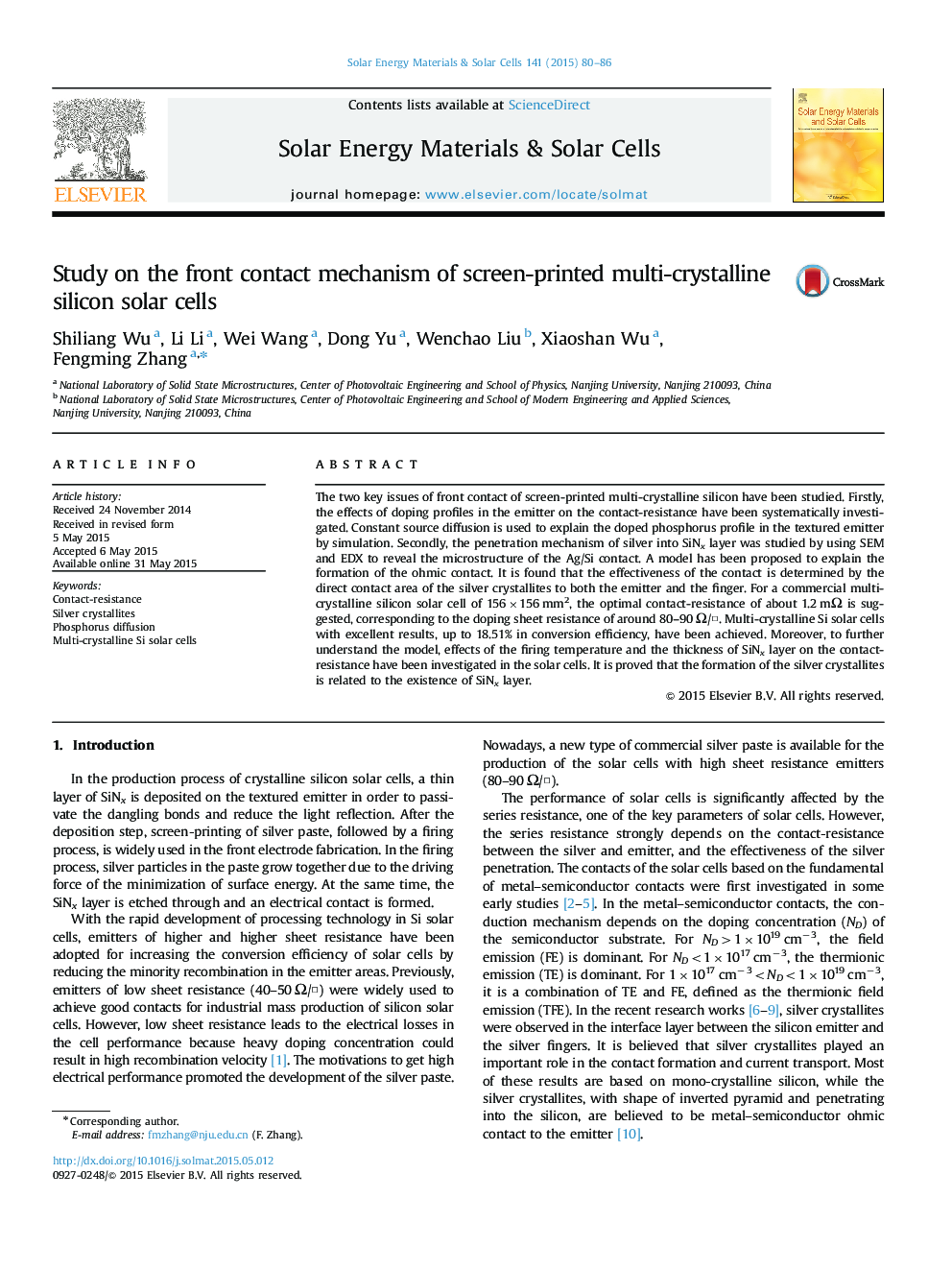| Article ID | Journal | Published Year | Pages | File Type |
|---|---|---|---|---|
| 77727 | Solar Energy Materials and Solar Cells | 2015 | 7 Pages |
•Factors affecting the contact-resistance of Si solar cells have been investigated.•A model has been proposed to explain the formation of the ohmic contact.•An optimal doping sheet resistance of around 80–90 Ω/□ is suggested.•It is proved that the formation of the Ag crystallites is related to the SiNx layer.
The two key issues of front contact of screen-printed multi-crystalline silicon have been studied. Firstly, the effects of doping profiles in the emitter on the contact-resistance have been systematically investigated. Constant source diffusion is used to explain the doped phosphorus profile in the textured emitter by simulation. Secondly, the penetration mechanism of silver into SiNx layer was studied by using SEM and EDX to reveal the microstructure of the Ag/Si contact. A model has been proposed to explain the formation of the ohmic contact. It is found that the effectiveness of the contact is determined by the direct contact area of the silver crystallites to both the emitter and the finger. For a commercial multi-crystalline silicon solar cell of 156×156 mm2, the optimal contact-resistance of about 1.2 mΩ is suggested, corresponding to the doping sheet resistance of around 80–90 Ω/□. Multi-crystalline Si solar cells with excellent results, up to 18.51% in conversion efficiency, have been achieved. Moreover, to further understand the model, effects of the firing temperature and the thickness of SiNx layer on the contact-resistance have been investigated in the solar cells. It is proved that the formation of the silver crystallites is related to the existence of SiNx layer.
